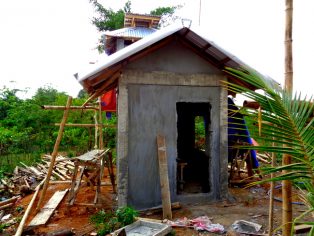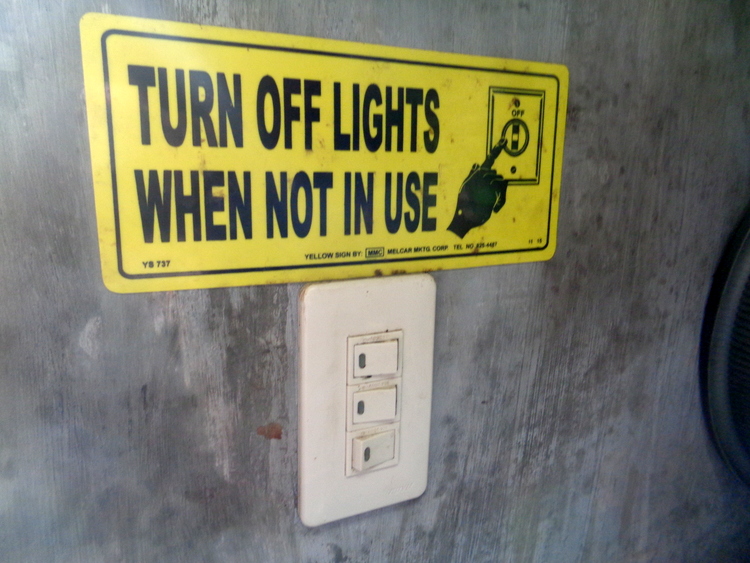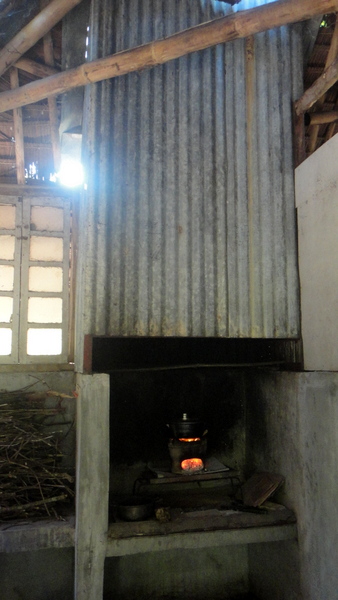UPDATE Dirty Kitchens in the Philippines
Perhaps I’m becoming more “Filipino.” Because I moved to the Philippines over 10 years ago, I have to wonder if I’m emulating “Filipino Time.” As a result, it’s taken me almost five years to update this post “Dirty Kitchens in the Philippines.”
New Updates on Popular Articles
However, maybe I can just chalk it up to lazy retirement habits. I used to write on a daily basis. Consequently, I’ve ended up with over 1,500 posts over the years. Therefore, you might believe that would benefit my website traffic. More articles. More visitors, right?
Not necessarily. Google has introduced some new search parameters. Over 86% of my website traffic comes from the Google search engine. Hence, I’m updating some popular posts that I’ve written in the past. That’s according to some online advice from Internet Guru Neil Patel. However, I’ll still be putting out some new stuff, too.
Because of my updates, my website traffic is going up again. Almost four million visitors over the past several years isn’t too bad for a niche website like “Philippines Plus.”
Dirty Kitchens in the Philippines
Finally, let’s get to the matter at hand “Dirty Kitchens in the Philippines.” The following photos are from our dirty kitchen that was built in 2015. It was erected behind our home that was also built in the same year.
Here’s a view of our dirty kitchen in the Philippines. A firewood supply is kept nearby. A cashew tree is in the back. A papaya tree sits on the other side.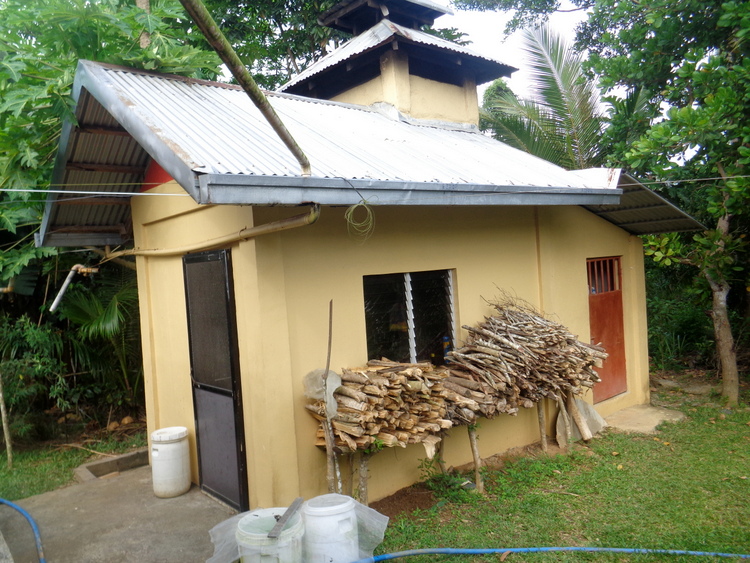
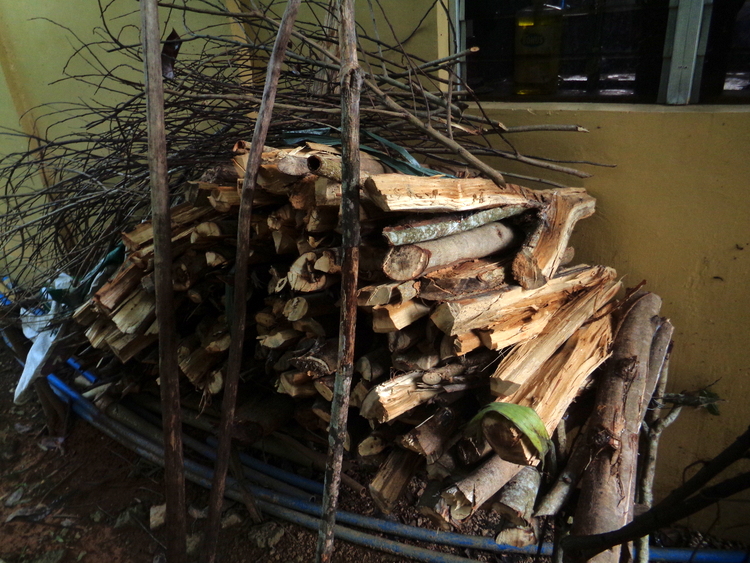
This is the other cache of firewood outside our dirty kitchen. We have lots of available firewood available on our 12,500 sq. meter lot due to the many trees we have. Furthermore, we don’t cut down any trees for our firewood. We only use firewood from dead branches such as tree limbs that have fallen to the ground.
Papaya, mahogany, cashew, mango, lemon, katmon, anahaw, hagas, and calamansi trees are some of the trees found on our property. We also have an abundance of banana plants.
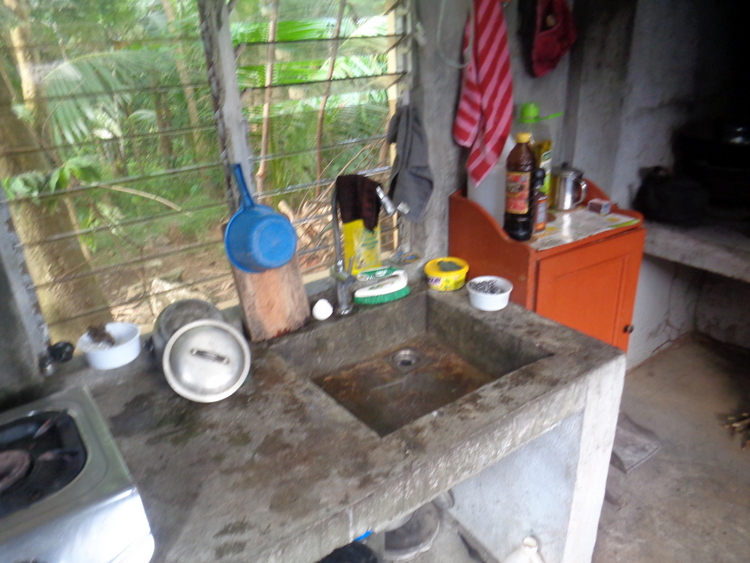
This is the sink area for our kitchen. A storage cabinet built by one of our former carpenters can be seen to the right. While we have screened windows on our home, jalousie windows are used in the dirty kitchen.
Citronella Plants Keep the Mosquitoes Away
Mosquitoes are not a problem. My wife has planted dozens of citronella plants (see next photo) outside the dirty kitchen area and outside of our home. The citronella plants keep the mosquitoes at bay. 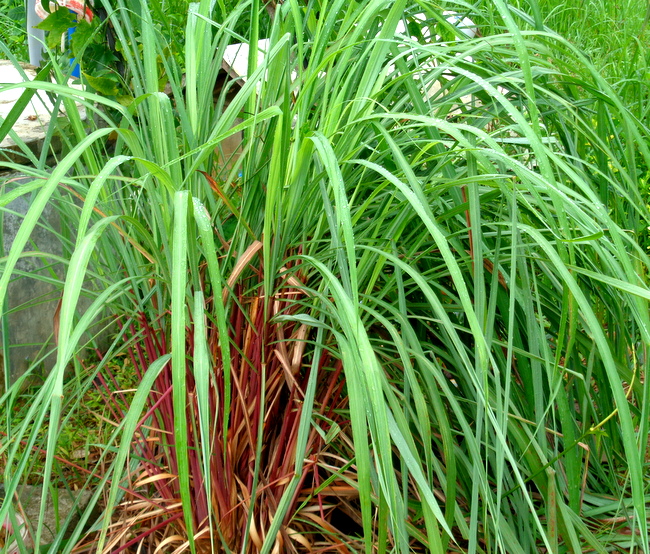
This is the twin burner cook stove fueled by a LP gas tank shown below. The stove is located to the left of the sink area.
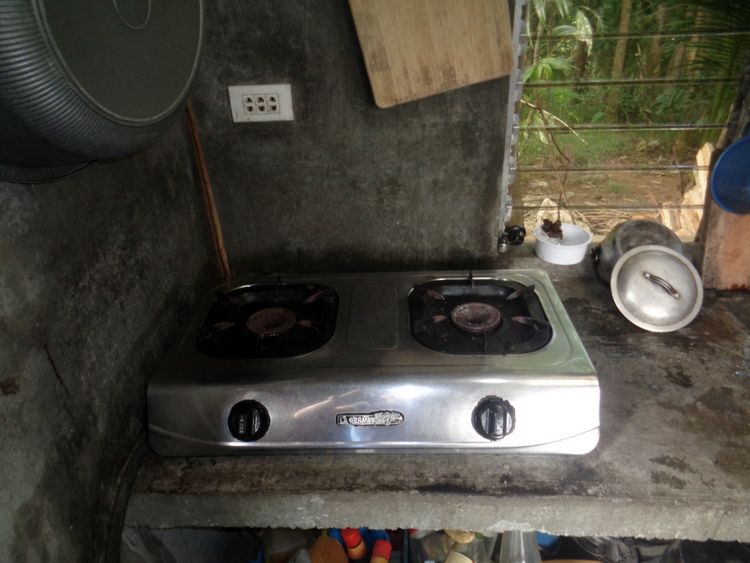
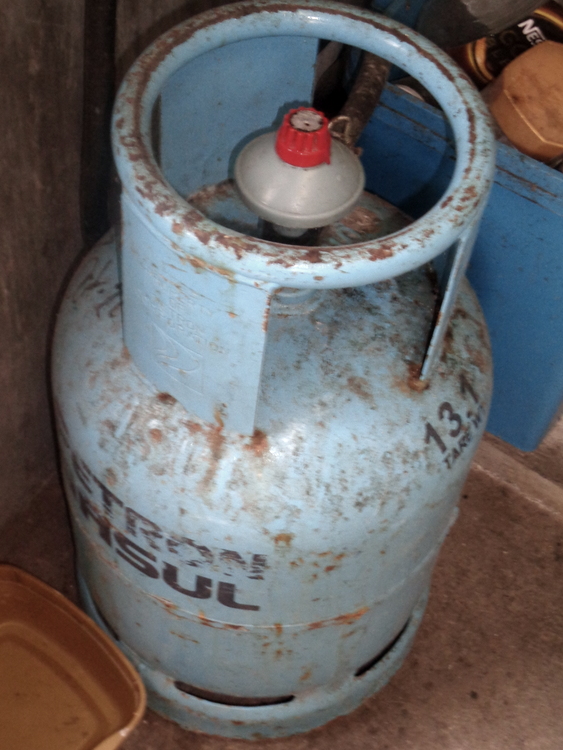
A tank of Petron Gasul usually lasts around five months because my wife uses a lot of our firewood to supplement the Gasul. I also use the firewood to heat up two kettles of water and let them come to a rolling boil for at least three minutes.
The boiling water is used to fill up two thermos bottles that we use for my Good Day coffee, tea, and Energen. Frankly, I never drink the breakfast concoction, Energen, It looks like it has tiny chunks of vomit floating in it. My father-in-law who lives with us consumes it.
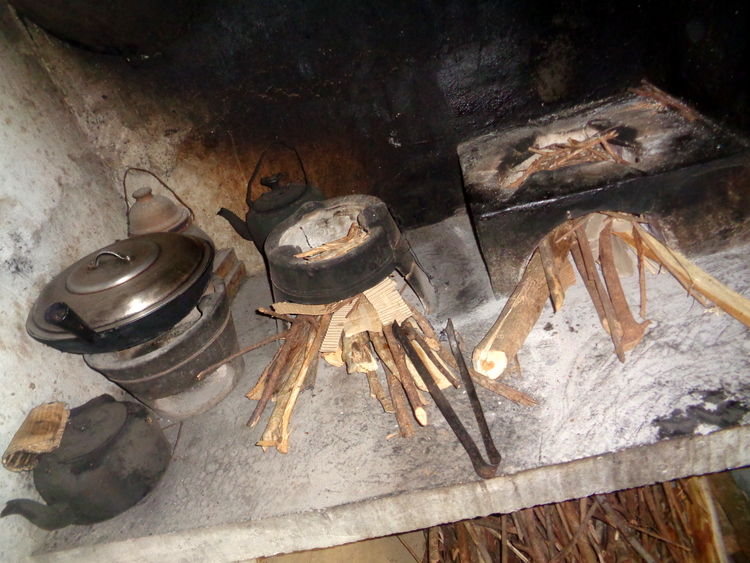
Here’s a look at the firewood cooking section. Three cooking pots are available. The smoke from the fires goes up the chimney located on top of the dirty kitchen’s roof as seen below.
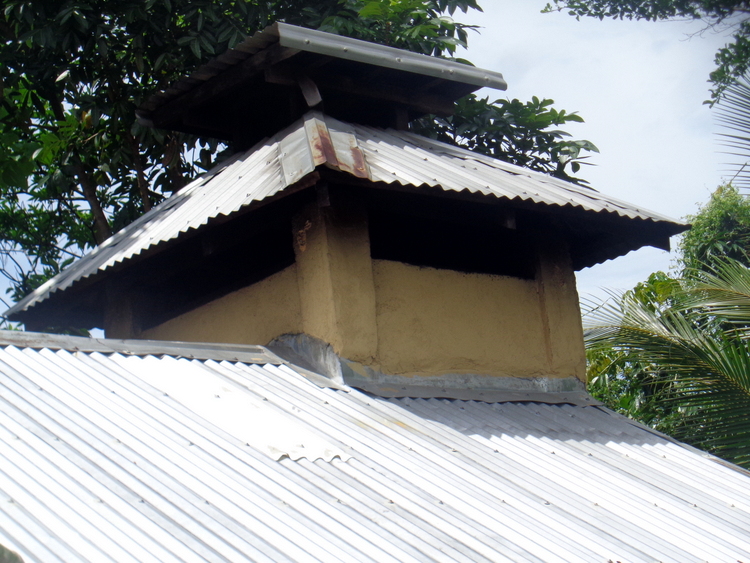
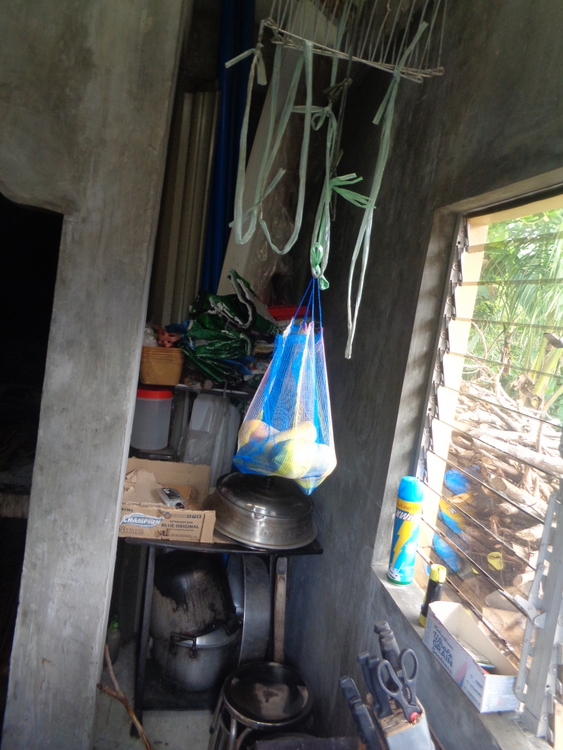
A small alcove located next to the firewood cooking area is used for storage. Papayas are shown hung up to ripen. Bananas are also hung up here in order to ripen. Jalousie windows on this side of the dirty kitchen provide for additional light as does a makeshift skylight in the ceiling.
An old entertainment center is re-purposed as a storage cabinet for the kitchen. A rechargeable flashlight is kept on the window ledge for the frequent brown outs we have in our home province of Guimaras.
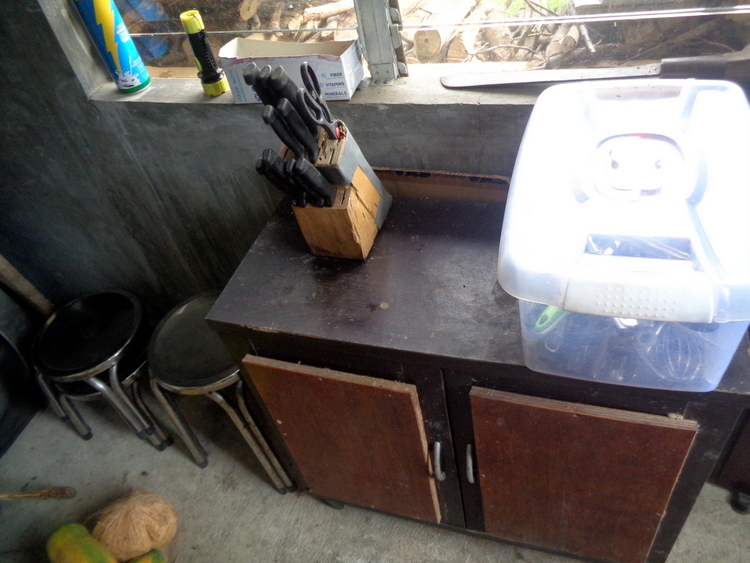
Please Turn off the Lights!
Rest assured if anyone ignores this warning sign, I promptly investigate to see who the culprit is. We had a domestic helper who used to leave the lights on quite frequently. She’s no longer employed with us. My spouse left the lights on once, also. I wisely keep her around.


Freshly cut lemon grass sits outside the dirty kitchen’s entrance. My wife will deliver this to her friend Emily later in the day.
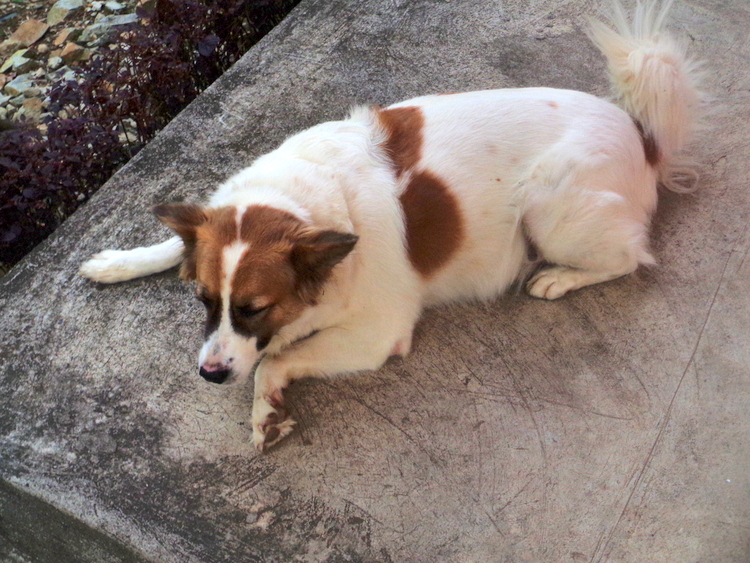
Finally, one of our eight pups, Prince, takes his post outside of the dirty kitchen whenever anyone is cooking inside. Invariably the little moocher always gets some kind of treat when the dish is completed.
Here’s the original article depicting our former dirty kitchens in the Philippines:
Dirty kitchens in the Philippines are not necessarily a reflection of a homeowner’s housekeeping habits. I remember my Mom and Grandma keeping extremely clean kitchens back in the States where I grew up in the Midwest. My Aunt Mary, God bless her, however, who insisted on only being address as “Mary,” was a different sto
Mary, a Slovak Catholic, who had a penchant for Camel cigarettes and beer, had a kitchen that might not always pass rigorous health care inspection standards. I wouldn’t doubt that some of those ashes from my aunt’s Camels would end up on the kitchen counter or table or in her goulash.
My Mom’s oldest (and only sister) also kept two small dogs in the house, “Pixie” and “Dixie.” Dog hairs littered the couch, the favorite hangout for the pooches.
My asawa in the Philippines also keeps a clean kitchen. But a dirty kitchen, built outside of the main house, is quite common. Because wood and homemade charcoal are used as fuel for cooking (LP gas is used inside for those that can afford it), it’s safer to have a dirty kitchen outside in case of a fire.
A fire inside a nipa hut or shanty could easily burn down the structure in a matter of minutes. Thus, the advantage of a dirty kitchen outside the house makes good common sense. Such a kitchen also can help keep the inside of a home from getting hotter.
We have a dirty kitchen at “The Farm,” our new location in Guimaras. It took me a half day of cleaning the structure but it was worth it. We were doing some cooking before, such as boiling water and frying stinky fish, outside on a small cook stove on the porch. But I got tired of inhaling the smoke that would sometimes drift inside our house so I took it upon myself to clean the dirty kitchen.
The kitchen area was a disaster. Bottles and other trash strewn were across the floor, and a bed of about two dozen frogs lived in one corner of the structure. Check out the next photo from a small room adjoining the dirty kitchen and multiply this about 100 times to give you an idea of the task I was confronted with. 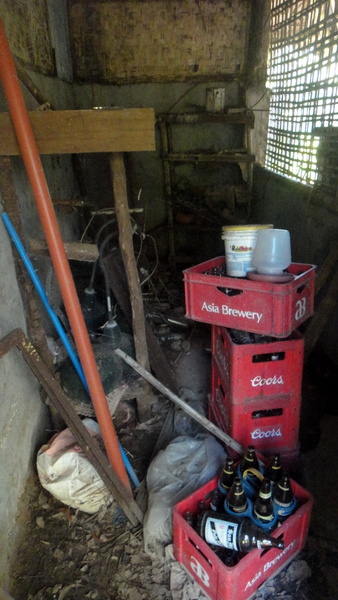
But since I’m a retired American expat living in the Philippines without any Internet access now, I have nothing but time on my hands. My spouse almost fainted when she saw me outside doing actual manual labor. It’s a sight she hasn’t seen much of the past several years.
Here’s a look at the exterior of the dirty kitchen at The Farm. Note the chimney which helps to keep the smoke out of our nearby home.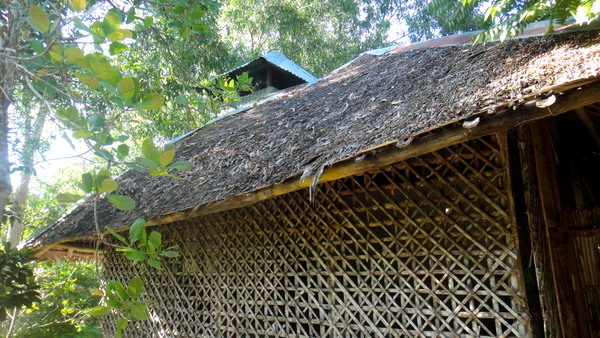
This is an interior look at the metal chimney. A stack of twigs sits next to the cooking area and the cook stove.
Here’s a picture of my hardworking asawa mugging for the camera. She uses the dirty kitchen now that’s it cleaned up. I also take it up myself to sweep the floor daily and clean the cook stove area. I’m bored and need something to occupy my time, even if it involves manual labor.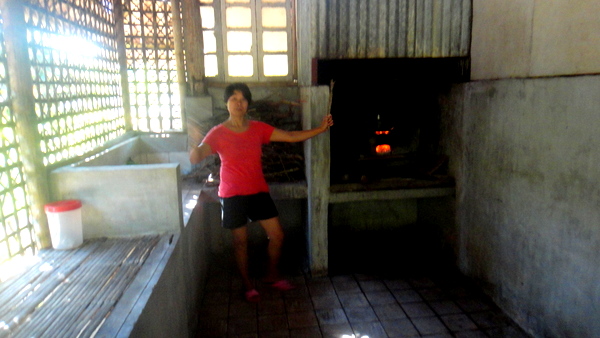
The next photo was taken a few years ago at our dirty kitchen at “The Compound,” where we formerly resided. As you can tell by my spouse’s expression, she wasn’t too happy that I snapped her photograph. I’m getting “The Look.” That never stops me, however, from posting such pics on my website. 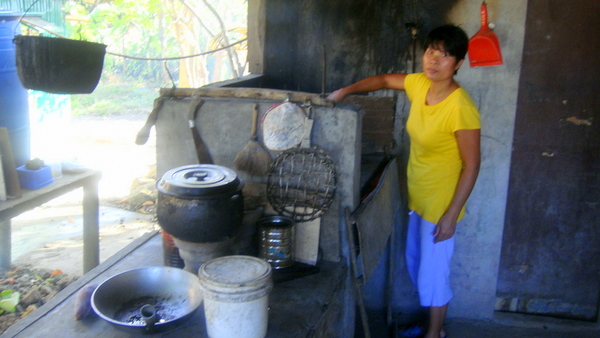
Of course we’ll have a dirty kitchen in our new home that will be built sometime next year in Guimaras. I want to model it after the existing facility we now have at “The Farm.” And since we plan to build at a new location that has Internet access, I’ll have more time to “work” on this website again and use that as my excuse to get out of any dirty kitchen duties in the future. At least that’s what I’m counting on.
